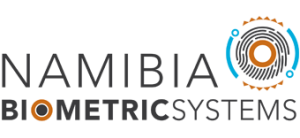Circumventing the limitations of Biometric Systems
Biometrics offers multiple usability advantages over traditional based authentication techniques, but raises privacy and security concerns. However, when traditional authentication methods are compromised can be replaced while biometrics is permanently associated with a user and cannot be replaced. Advanced biometrics research has been conducted by many research groups world-wide to circumvent the limitations of biometrics. The aim of the research is to utilise the positive characteristics of traditional authentication methods by using advanced mathematical models to produce biometric template which can be cancelled and be revoked like a password which is unique to every application. Instead of storing the original biometric, advanced mathematical models are applied to transform the original biometric into a unique domain. The transformed biometric and the advanced transforming mathematical model are either stored on a smart card or centrally in a database. The model preserves privacy because it is not possible or computationally very hard to recover the original biometric template. In an unfortunate situation where a user’s biometric has been compromised, the followings steps can be taken:
- Simply re-enrol the user using another advanced mathematical model and thus providing revocability.
- The model prevents cross-matching between the databases as each application applying the same biometric uses a different advanced transformation model.
- Biometric feature representation is not changed by the advanced mathematical models. This allow the use of standard biometric discriminating feature extraction and matching algorithms.
In summary, cancellable biometric scheme offers the following:
- Diversity: Different applications must use different advanced models to transform the original biometric and thus resulting in a large number of protected templates from same biometric feature is required.
- Revocability: Cancellable biometrics simplifies the process for revocation and reissue in the event of compromise.
- Non-invertible: Cancellable biometrics prevents the original biometric from been recovered from the template.
- Performance: The performance of the biometric systems is not impacted by the advanced models and hence the performance of the system does not deteriorate.
For more information on the solution from Biometric Research Laboratory, BRL, we refer all reader to the book published by our senior researcher title “Secure Biometric Face Recognition: A Case Study for Non-Reversible and Cancellable Biometric Transforms”.
More information on the implementation of biometrics based solutions can be requested from info@namibiabiometricsystems.com.
